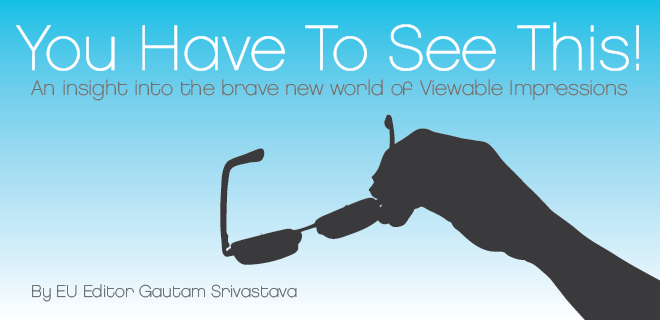
Go in-depth and learn from those in the know when it comes to new metrics and Viewable Impressions at this year’s only European AdMonsters Publisher Forum.
As the digital marketing industry continues to grow the discussion around the metrics we use and deliver to clients have come under the microscope and nowhere has this been more apparent than in Display.
With just over a billion pounds spent on Display advertising in the UK alone (IAB 2011 figures), agencies and clients are well within their rights to demand more in terms of ROI.
In fact, many would argue that it’s amazing that Display has cultivated such a proportion of ad spend (28% according to the very same IAB 2011 stats) with the simplistic idea of impressions – without any meaningful form of verification.
The front-runner in the mire of new metrics being banded about on the display scene is the Viewable Impression. The Media Council defines this as “…officially occurring when the ad content is loaded, rendered and at least 60% of the ad surface area is within the visible area of a viewer’s browser window on an in focus web page for at least one second.”
“Ad agencies and their clients want clearer ad impression information to determine the impact on the campaign and the budget” according to Oren Netzer, CEO of DoubleVerify. “Sometimes, the ad gets served in the bottom of the screen and isn’t viewable, yet the advertiser gets charged for it.”
When advertisers and agencies measure the success of campaigns, they make assumptions that the ad got viewed, but they’re not.” In order to maintain and ultimately increase the market share of Display clearly this needs to change. But what’s the monetary model outside of fixed CPMs?
“Publishers that understand the highest viewable ad position on site page can charge higher CPMs” says Netzer.
While this metric is seemingly a good step forward, how does it actually work in practice? Universal McCann and others have been testing Viewable Impressions for some time and the findings make for interesting reading in regards to the monetary model to follow.
Viewed for more than one second, the highest-performing sellers of media had a viewable ad rate of 83%, while the lowest was 28%.
The top-performing sellers of media had average viewable rate of 75%, while the low performing had an average of 40%.
Some 54% of the ads delivered were viewed for at least one second, followed by 43% for at least three seconds, 36% for five seconds, 27% for 10 seconds, and 12% for 30 seconds or more.
Suggesting that in terms of embracing this new metric ‘time viewed’ should also be a key factor when looking at the right monetary model.
And it’s not just UM embracing this. ESPN.com have always shied away from using ad networks, exchanges or any sort of programmatic trading, instead relying on their direct sales force to take their inventory to market – that is, until now.
ESPN.com has long seen its inventory as premium and took it to the market as such (hence the aversion to networks etc) and is now willing to prove that point via the Viewable Impression and their partnership with RealVu.
“There is real concern that ad dollars are getting expressed across media that isn’t reaching the desired consumer, which means that dollars are being wasted and opportunities for success are limited,” said Donnie Williams, chief digital officer at Horizon.
“A move toward viewability gives a broad spectrum of marketers the best shot at efficacy.” But until now, such efforts have been mostly talk. While employing ad verification technology has become standard for many advertisers buying inventory via ad networks and exchanges, few if any publishers have started selling guaranteed viewable impressions to brands.
“We all know the tricks that go on in this business,” said Lisa Valentino, vp, digital ad sales at ESPN. “We want to make it clear that not every impression is created equal. We need to level set this industry and we think this might become the new currency.” With UM and ESPN.com just some of the front runners in the brave new world of the Viewable Impression it’s not hard to predict other major publishers following suit.
From the information out there already it seems that with the right model – this could be a beneficial for both Publishers and Agencies and at the very least make us as an industry more accountable – I mean, there’s no such thing as bad data right?
For a more detailed view of Viewable Impressions and to get insight from those in the know join us at the Publisher Forum in Vienna where Petri Vatanen from Sanoma will be relaying his findings having embraced this new metric earlier this year.
REFERENCES